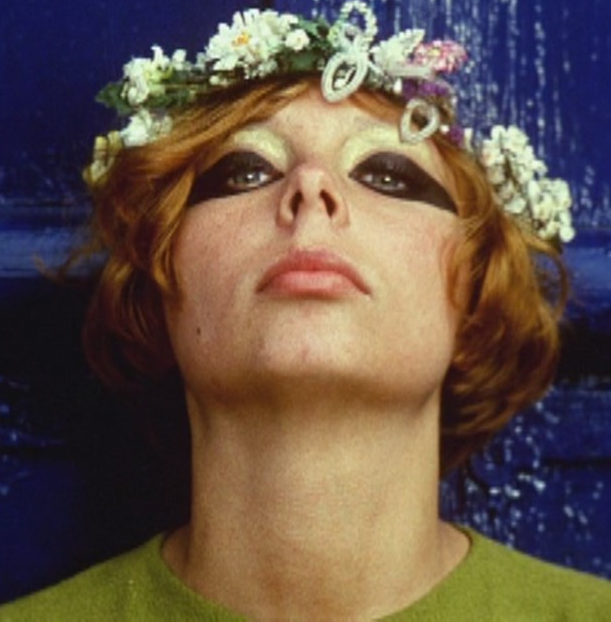https://inspo.cc/
Inspiration board
A quick preface: The point of this guide is to support users as they search for their style and start building their wardrobe. It’s not totally inclusive and won’t cover absolutely everything you’ll ever need to know as you build your own personal closet. It’s a starting guide.
Please also note that you won’t find any prescriptive information here. I’m not going to tell you to go out and buy a trench coat, black pumps, and a white button-up because you may never need those things. Women’s fashion is so incredibly diverse that it’d be impossible to lay out guidelines for all women. Instead, I will tell you how to figure out the staples for your wardrobe and how to lay out guidelines for yourself.
Finding a Style, Building a Wardrobe
Once you understand the basic elements of style - the central tenets of fit, silhouette, and colour coordination - it is not an uncommon to start desiring to cultivate a personal aesthetic. Whether you eventually find your satisfaction in the staid, tried-and-true preppy aesthetic or end up on the cutting-edge hopefully this guide will help you discover what makes you happy.
Fortunately, there's no reason to step blindly into the unknown on your quest for sartorial independence - there are numerous resources that can help you develop a knowledge of the huge variety of options out there and serve as sources of inspiration. A large part of developing your own aesthetic is building on what has come before, so leveraging these assets can only help to accelerate the process.
While they can't compete with the quantity of information available on the internet, one should not discount the value of books. For gaining a better understanding of how garments are created, learning the history of garments from the pantsuit to the high heel, or delving into fashion theory, get reading. Recommendations include Fashion Theory: A Reader and The Japanese Revolution in Paris Fashion. Finding Your Interests
The most difficult part of the whole process is determining what it is you're interested in - there's no shortage of choices, from the avant garde to the clasically chic, there's someone producing for every niche. Whether they be small, independent designers or corporate giants the quickest path to discovering them is via the internet.
To start your search think of a character from a TV show or movie whose style you particularly enjoyed. Search Polyvore for their name or the title of what they were in and (hopefully) it will turn up hundreds of sets of clothes that draw inspiration from that character's style, or provide exact lists of what they wore in a particular scence. Use these for styling ideas, but also take note of the brand names and stores that pop up repeatedly.
Next, turn to tumblr and start pumping those brand names into the search box. Click through to a few blogs and see if the first few posts appeal at all. If they do, follow them. It's much easier to cut down on feeds you don't enjoy later than spend hours trying to find one you wish you'd followed. Save all the images and posts that appeal to you in one form or another - I particularly enjoy using Pinterest for this, as it's easy to quickly scan through your archive at a later date and cull or categorise as you see fit. Once again, if you notice particular brands popping up over and over and it's not already on your list, write it down.
By now, you'll hopefully have a bevy of blogs to browse for inspiration, plenty of pinnned favourites, and a score or more of retailers to search for items of interest. With that information at your fingertips, it's time for the next stage: Trying and Buying
Once you've more or less identified the styles and aesthetics that appeal to you through extensive browsing, it is imperative to visit physical stores and try garments on in person. Try to find stockists that carry brands of interest and develop a feel for their sizing, how items can be combined, and start developing a relationship with a sales associate at stores you plan to frequent.
When experimenting with a new style, start off by purchasing inexpensive items - this does not mean be cheap, but frugal. For designer and high-end clothing, rather than buying new, check eBay for an item, and sell things that don't work out. On the lower end, or for trend items you don't see lasting more than a few seasons, stop in at H&M, Zara, or Topshop and pick up some pieces on the cheap. Their occasional designer collaborations, while not of a much higher quality than their typical offerings, can give you a chance to mix in novel concepts without breaking the bank. Thrifting and consignment shopping can also yield gold with frequent visits, especially for those residing in metropolitan or affluent areas.
Most importantly, don't decide on a style without having worn it for a while. Pick up a few outfits, mix and match, see how others react, and how you feel. If you come up with something that you love right away, that's great, but don't set it in stone until you research further and are certain it is the direction you wish to go in. Only then is it time to start investing heavily in a wardrobe. Going Further
Once you discover the message to convey through your garments, it's time to assess what items will add the most to your wardrobe and cement your aesthetic, a careful balancing act of versatility and self-satisfaction. It is not uncommon to find an item that immediately grabs your attention, but if it wouldn't mesh with your current wardrobe or work with two or three items at most, it's not a worthwhile purchase (for the time being). Unless you lack clothing mandatory for a particular activity, such as a job with a dress code or uniform, you do not need an item, and certainly not an expensive designer one. To put it more succinctly, wait to purchase until you find the perfect piece.
So what should you buy? Find the key pieces that will anchor a chosen identity to your person. For example, if you were interested in the classic preppy look and wanted to project the image of being vaguely sporty, nonchalantly put-together, and ultimately practical, a classic Barbour raincoat of indeterminate age might be a staple of your wardrobe. A gallery owner or curator on the other hand, may be far more attracted to the minimalism of designers such as Jil Sander and instead invest in sparsely detailed outerwear that reveals its provenance only to others of similar taste.
Once you have identified what impression it is your trying to send, shopping by brand starts to become a useful tool for filtering material of interest ouf of the rapidly evolving and ever changing fashion industry. Think of them as similar to the tags and categories assigned to posts on blogs - Gap might be associated with “plain”, “utilitarian”, “functional”, while Brooks Brothers might be “staid”, “traditional”, and “heritage”. Both our prep aficionado and modernist would pass over these, and instead search for ones described as "heritage", "classic", "pastel", or “refined”, “subtle”, and “minimal”. Either might come across a shirt that is atypical of a brand, say something from Versace that appeals to the futurist, and is an excellent addition to their wardrobe. They should not ignore it or skip purchasing, but it would still be a waste to follow each new collection because those items are so rare. Finding a boutique that tends to make buys matching your aesthetic is another discovery mechanism to consider. Many of these have blogs where buys and info about up-and-coming brands are posted and can be an excellent source of new finds.
At some point in your aesthetic journey your focus may begin to change, perhaps drifting from tarants and pastels to high fashion and the catwalks of Europe - whether due to a change in living situation or an evolution of taste, embrace it. Bill Cunningham, of NYTimes fame, calls fashion “the armour to survive the reality of everyday life.” If some change calls for different armour, so be it! Never let your style be constrained by how you might have dressed in the past.
Searching "capsule wardrobe" is a great way to have a minimal yet effective set of clothing.



deleted by creator